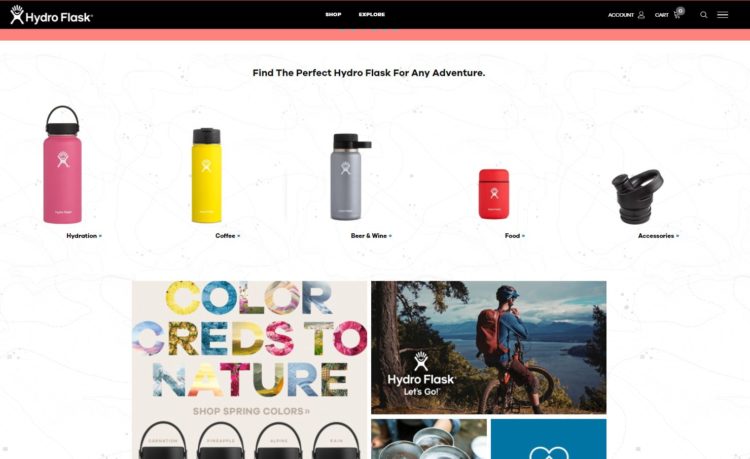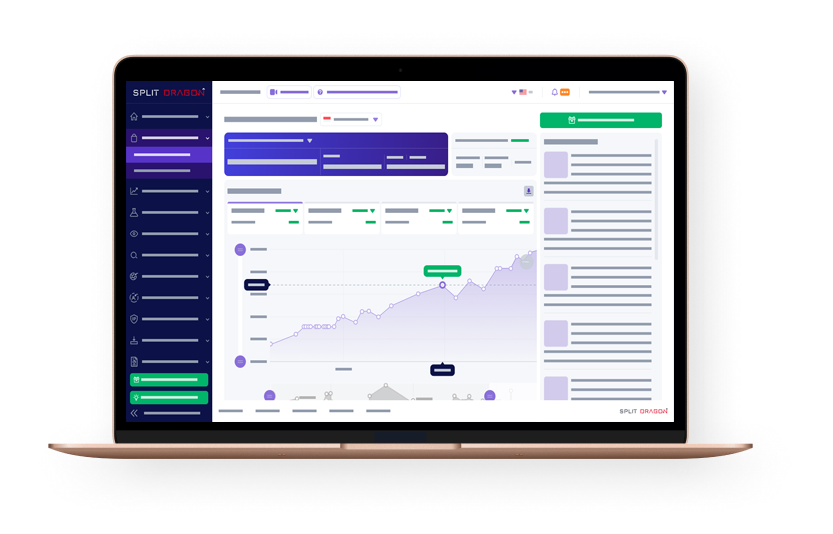Dive into the guide of marketplace marketing
Marketplaces have existed ever since there’s been anything to sell. The first marketplace appeared some 5000 years ago. Now it has evolved into online stores like Shopee and Lazada.
A marketplace is a place where sellers gather and sell their products to the crowd.
It draws a multitude of customers because it satisfies three buyer principles: Ease, Relevance, and Convenience.[*]
That is, the ease of having everything in one location, a relevant range of offers, and just having a seamless and convenient shopping experience.
This same principle is being followed to this day, despite the colossal evolution of buying and selling, thanks to the internet.
Now, online shopping became the new normal. And eCommerce, as we call it, became one of the biggest industries in the world. Of course, this is followed by the proliferation of online marketplaces.
But is there any difference between eCommerce marketing and online marketplace marketing?
Absolutely.
To put it into perspective, a marketplace can be considered as an eCommerce website but not all eCommerce websites are marketplaces.
This also means that there’s a difference in how you market your products, depending on which platform you are using.
In this article, we’ll tackle the difference between eCommerce and marketplace marketing.
We will also feature the best practices on how to create and implement marketplace marketing strategies.
What is an eCommerce platform?
First let’s define eCommerce. eCommerce, or electronic commerce is any buying and selling transaction done via an online platform that is run and controlled by a single brand or owner.
eCommerce involves not just managing the store but also the invoicing, inventory, and customer service.
An eCommerce platform is where a single seller does this business commences. It’s very customer specific and no other seller can join and put their products on the website. Compared to traditional stores, an eCommerce platform is like a brick-and-mortar online store for a brand.
Here’s an example of an eCommerce website:

Here are the two most common business models that applies to the broader side of eCommerce:
- Business to Consumer (B2C) – B2C is the most popular eCommerce model where the transaction and sales only happen between the business and the consumer. Example: When you buy shoes from an online retailer.
- Business to Business (B2B) – B2B refers to any business selling goods or services to another business. It does not sell directly to consumers and usually involves raw products like the manufacturer to a wholesaler like Alibaba, or Split Dragon offering software products to online retailers.
What is a marketplace?
An online marketplace is an eCommerce website where the products are provided by multiple sellers.
Essentially, a marketplace is a convergence of three entities: the sellers, the buyer and the website owner or the administrators.
In Southeast Asia, the top marketplaces are Shopee, Lazada, Tokopedia, and Bukalapak.
Here’s what a marketplace looks like:
The following business models are commonly found in marketplaces:
- Direct to Consumer (D2C) – D2C is considered to be the newest model of eCommerce. This refers to the brands selling directly to the end customers, eliminating retailers, distributors, and wholesalers. For example, subscriptions like Netflix, and social selling platforms like Instagram and Facebook are some of the popular platforms for D2C sales.
- Consumer to Consumer (C2C) – This eCommerce model refers to the sales of goods or services to another consumer. Example: selling of pre-owned items, and buy-and-sell. Platforms like Taobao and bidding sites like eBay are the most common C2C platforms.
Shopee and Lazada’s eCommerce model can either be B2C, D2C, and C2C.
The bottomline: If an eCommerce platform is like a physical store for a brand, a marketplace is like a mall.
eCommerce marketing vs. marketplace marketing
When it comes to marketing, it’s crucial to know where you’re advertising your products so you can strategize appropriately.
Both eCommerce and Marketplace Marketing have the same goal. However, they require different approaches and targeting.
The purpose of eCommerce marketing is to implement promotional strategies to increase visitors to your online shop, convert those visitors into paying customers, and retain those consumers once they’ve made a purchase.
In short, it answers this question:
“How do I convert top-of-the-funnel traffic into sales and customers?”
The same goes with the online marketplace, but it does not only attract customers but sellers as well.
Meanwhile, in marketplace marketing, your main goal is to stand out from your competitors inside the marketplace.
A marketplace is a crowded place, with thousands of sellers selling almost the same products. You will be competing against product information, pricing, engagement, and reviews. Another important thing to consider is also how the algorithm works inside the marketplace.
But this is not a bad thing at all.
The marketplace is pretty straightforward from the perspective of the buyers. From product choices to customer support, everything is in there. Moreover, marketplace owners are constantly coming up with new features and tools to keep both sellers and buyers happy.
Marketplace marketing strategies
What are some marketing ideas for marketplace?
As mentioned earlier, visibility is your top priority when it comes to marketplace marketing. Here are some marketing ideas so you can be visible inside the marketplace:
Live Streaming/Increase engagement
A Taobao streamer earned $49.7 million in one day. Yes, you read that right. Live Streaming has transformed eCommerce and is deemed to be the next big thing in the online retail industry.[*]
There are a lot of benefits live streaming can bring to your shop but two points stand out: better interaction and a sense of urgency.
By doing it live, it simulates the experience of going to a physical store. You can directly answer your customers’ queries, show varieties of products, and do demonstrations.
While you are doing your demonstrations, you can create a sense of urgency by giving out coupons and discount vouchers that the audience can avail of when they check out while watching your live stream. Watchers become more compelled to make a decision purchase on the spot.
You can learn more about live streaming here.
Join marketplace marketing campaigns
Marketplace campaigns are featured prominently on the marketplace websites, giving the participating sellers an increase in shop traffic and revenue
Check out these numbers:
- 7x more compared to average daily net orders
- 5.5x average daily sales during campaigns
- Campaign visits are 5x more than average daily visits
There are tons of campaigns to choose from, and some are specifically designed for a specific niche or audience.
There are also big campaigns like 11.11 and 12.12 where only qualified shops with good product and shop ratings can join.
Here’s what a marketplace campaign looks like:


Product listing optimization
Product listing optimization, also called marketplace optimization, is the process of upgrading your product listing using proper keyword placement to improve your search visibility.
The process involves keyword search, optimizing the text and descriptions using the high searched keywords, and improving image content.
Here’s 7 effective listing optimization you can use:
- Generate keywords specific for the marketplace algorithm
- Use keywords on your product title and product description
- Upload high-quality images
- Update your keyword search constantly
When you become a marketplace seller, your Product Detail Page (PDP) becomes your main tool that can influence the user’s decision to complete a purchase. And it is not a one-time thing and requires a constant update for your products to stay visible.
Learn more about product listing optimization here.
Use the best online marketplace optimization tools
Nowadays, marketplace tools help companies and brands manage and optimize their online shops inside the marketplace. Most of the sellers are using tools like Split Dragon to ensure visibility daily.
Must-have marketplace tools include:
- Keyword search tool
- Product ranking
- Search rank tracking
- Competitor tracking
- Split testing
All of these tools are automated and available in Split Dragon, plus additional features like IP protection, market search, and keyword suggestions.
Be a marketplace seller now…
Online marketplaces like Shopee and Lazada have the impression that it’s the perfect starting point for beginner sellers. And as a big brand, you might wonder why you need to share your gains in the marketplace?
Here’s our answer:
We are now in the optimization era of eCommerce, and having an eCommerce website alone is no longer enough.
Going back, marketplaces provide ease, options, and convenience which is why it has millions of visitors daily.
If your product is not yet in an online marketplace, you are missing millions of visitors. If you need to understand more about how marketplaces work, or you need to help boost your products inside the marketplace, Split Dragon can help you.
Try Split Dragon
Find winning products. Spy on competitors. Project your eComm store profitability.
Request DemoBy signing up, you agree to the Terms of service and Privacy Policy





